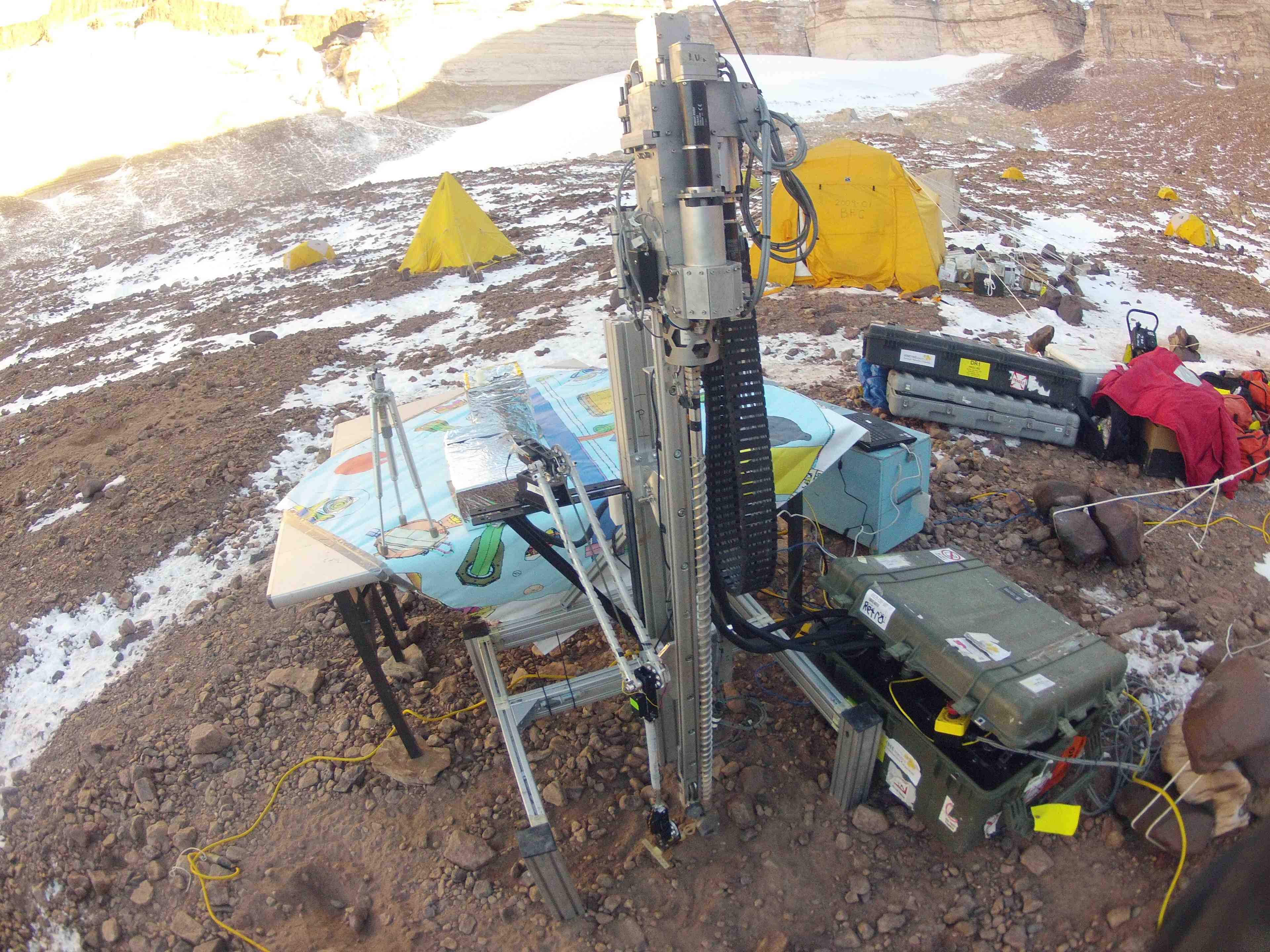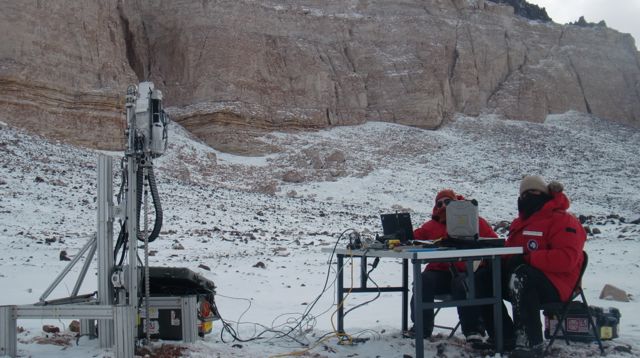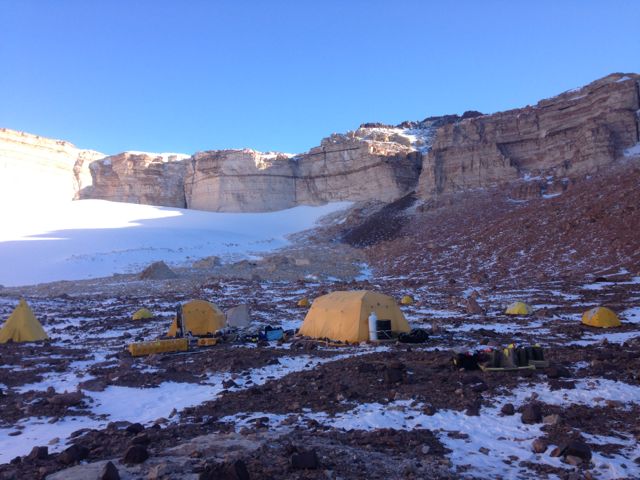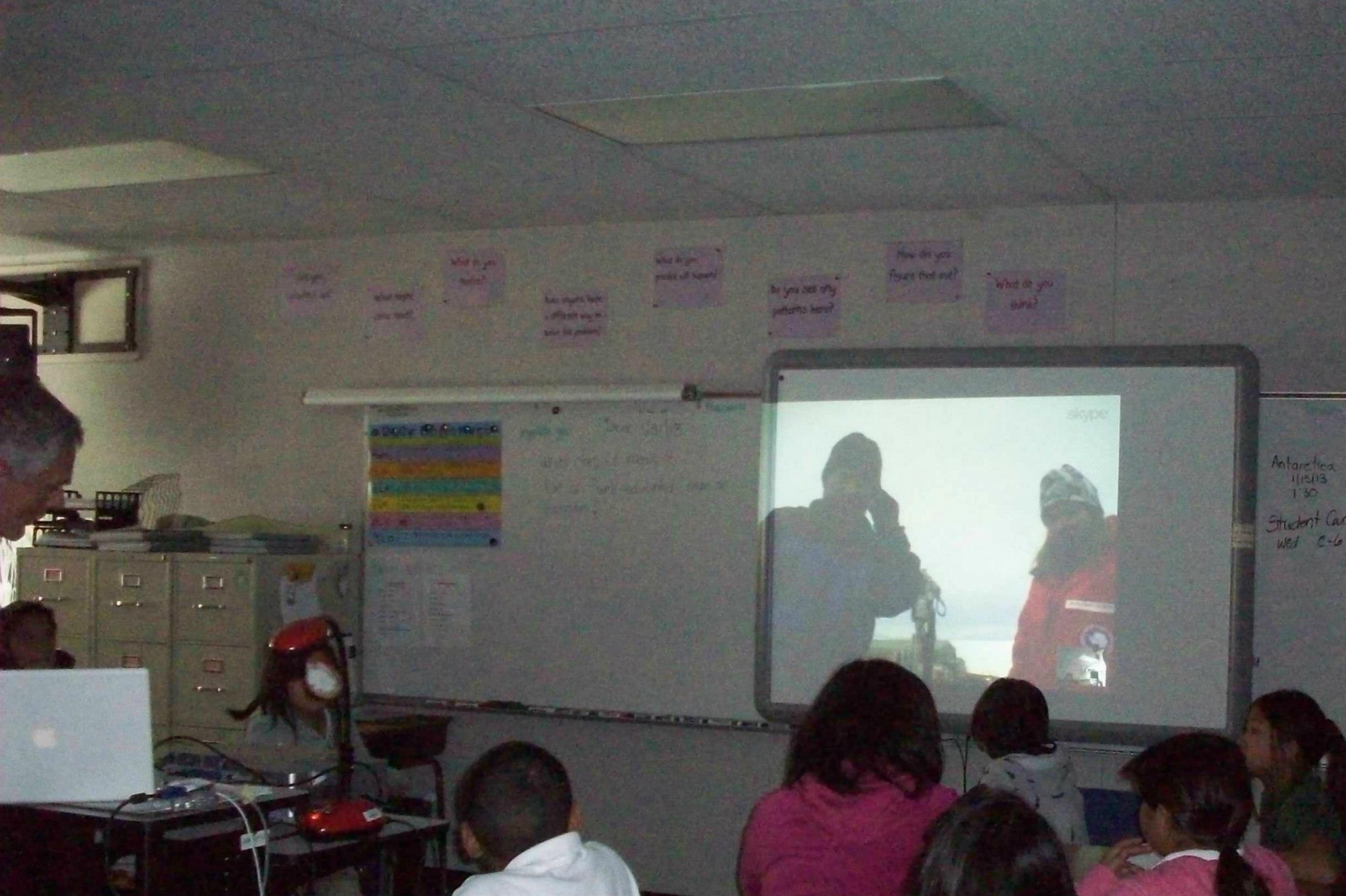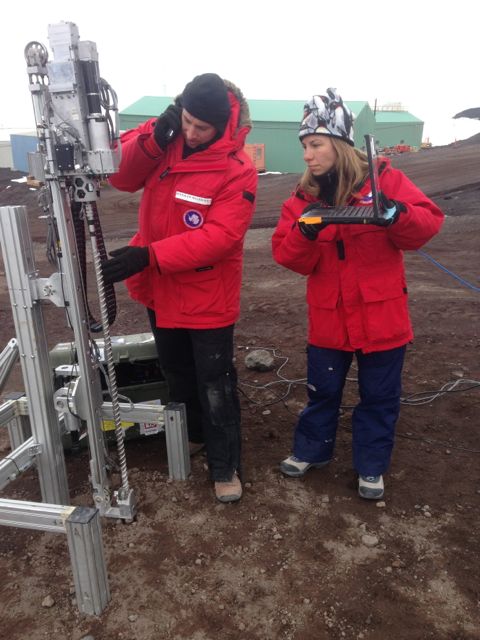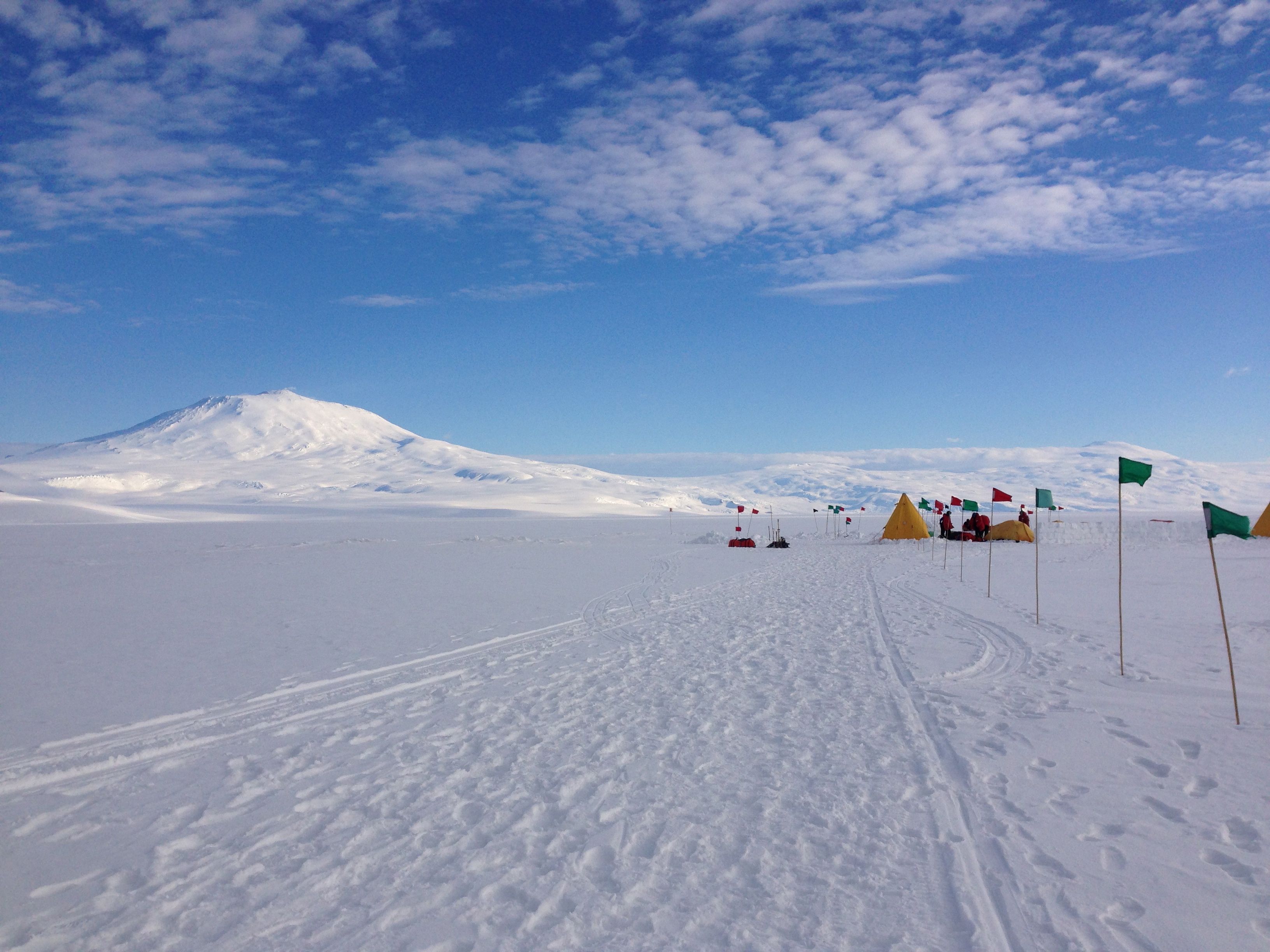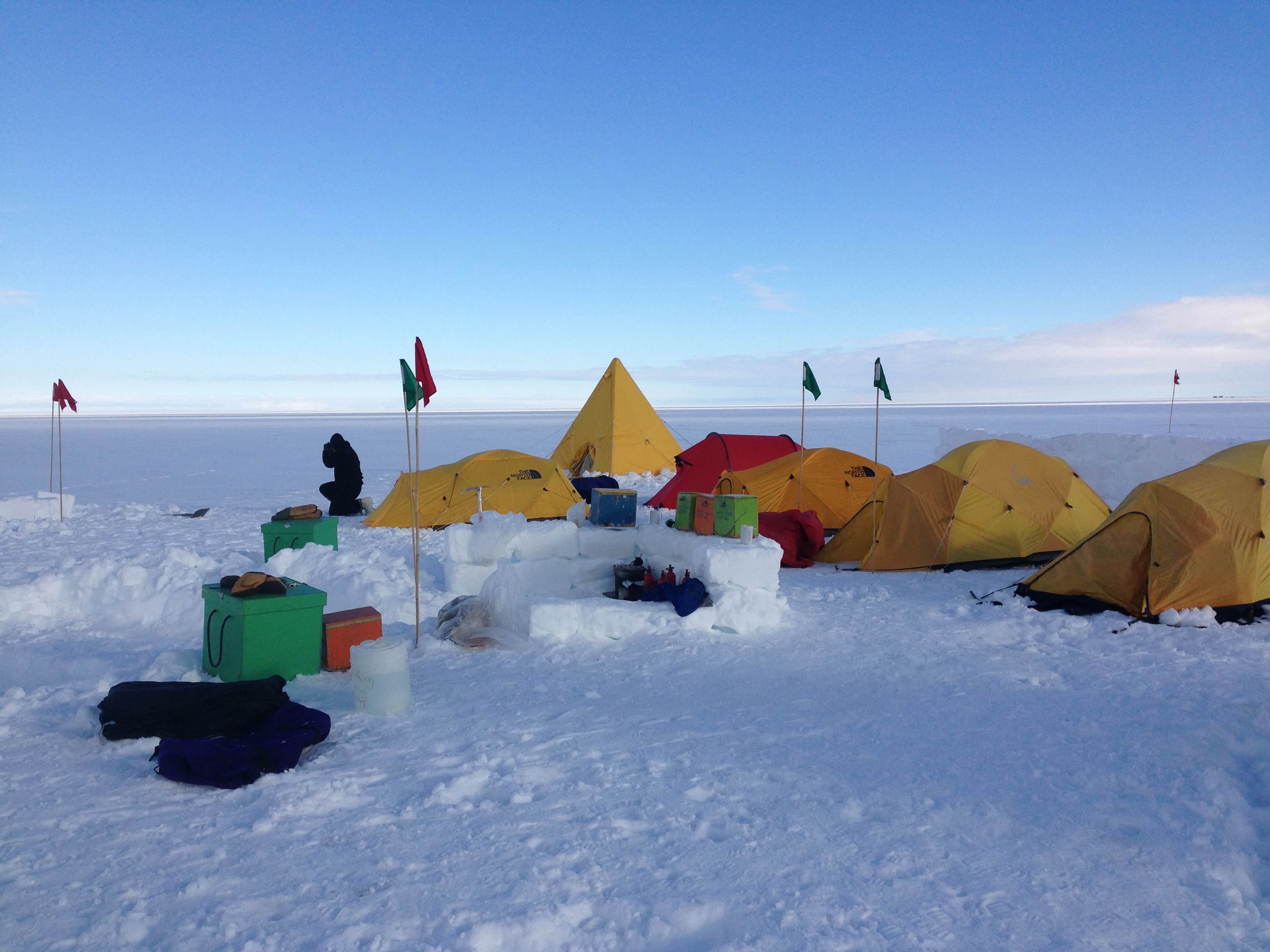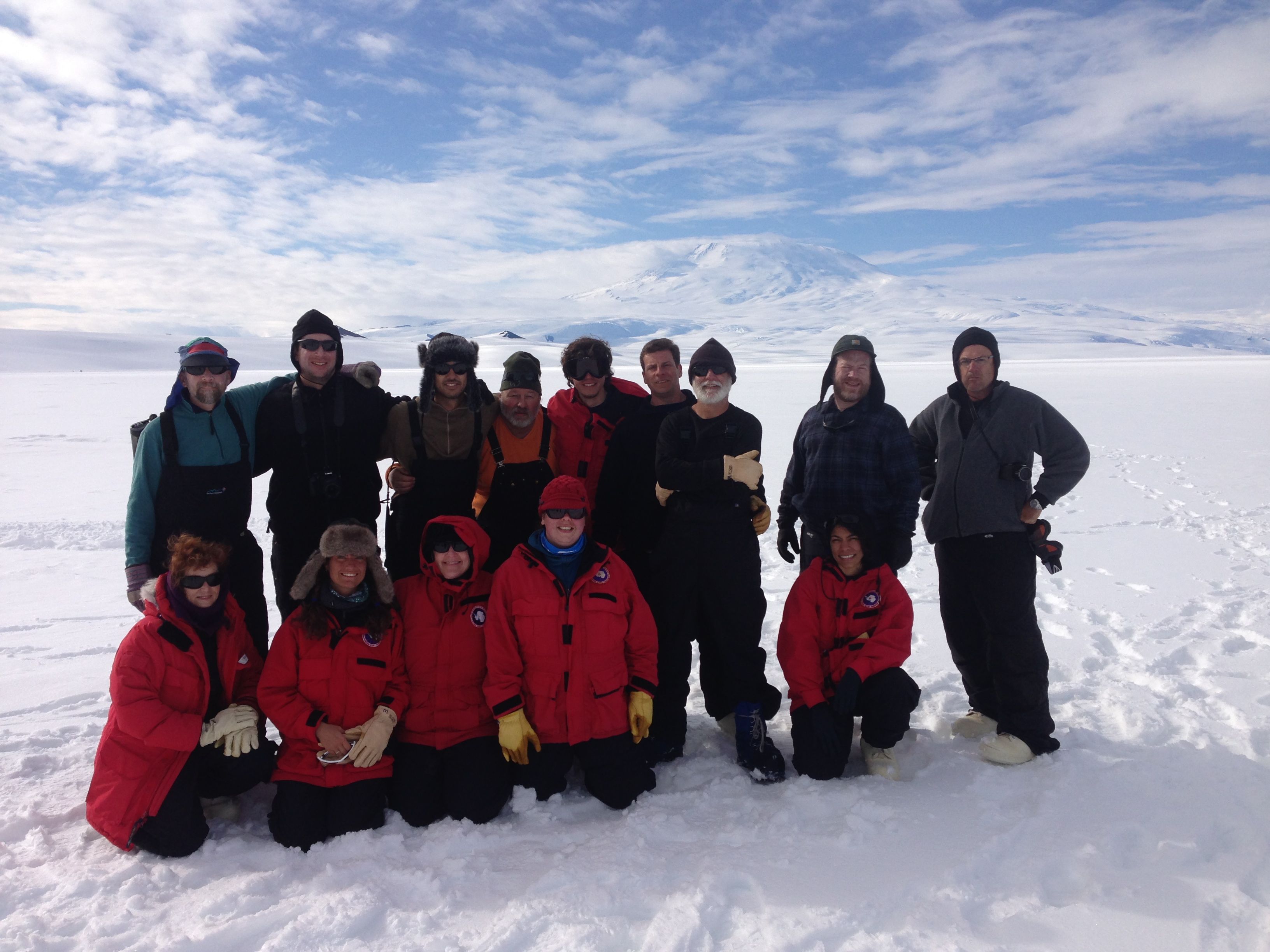The NASA Ames-led Icebreaker team has finished its Antarctic testing, and team members have begun departing for warmer climes. Two more team members leftthis morning, with just myself and Jackie Goordial (from McGill) remaining on the continent from ourIcebreaker drilling team. Our lab space inspection is at 4pm thisafternoon, and then bag-drag (moving luggage to Fleet Ops for checkingand weighing) likely tonight and hopefully a flight tomorrow (Friday)to “Cheech” (i.e. CHCH or Christchurch, NZ).
Looking back at last week’s field testing, here’s a “day in the field” as we wrap up this deployment.
Peopleget themselves up out of their warm sleeping bags around 7 am, makethemselves breakfast (no cook, it is self-serve) start work at 9am, lunch iswhenever you break for it around 12-2pm, then more work (drill tests, digging, running instruments, surveys) until after 7pm, andusually someone then finishes early and gets dinner going. The day before, we bringdinner materials into the kitchen tent, so that 24 hours later it will be thawedenough to cook. I personally drink huge quantities of reconstituted orangejuice (a gallon, one day), as we had a big surplus, the air is very dry, and McMurdo won’ttake returns of frozen foods.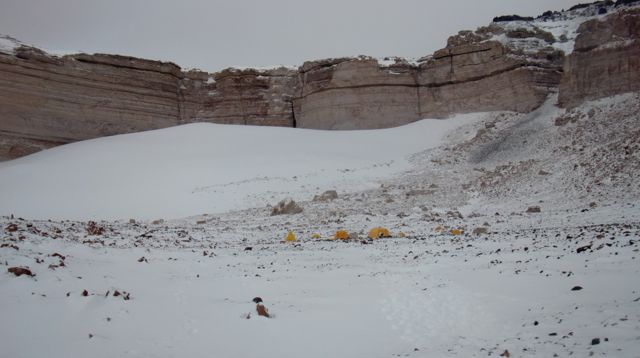
2013 Icebreaker project base camp in University Valley, Antarctica.
We have a 2-burner campingstove… most things are made with hot water. We have a skillet,also, for (powdered) eggs et al in the morning and stir-fry or saute inthe evenings. Diet is heavily carnivorous and high-calorie. We havetwo main tents, which have little propane heaters, and people tend tocongregate in one or the other when not working outside. One is the”science tent”, where we have the drill control consoles, the other is the kitchen/dining tent,which has a center table used for food prep and meals.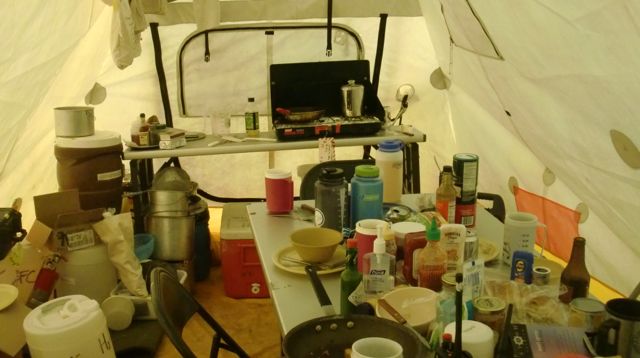
One small crowded kitchen/dining tent served as a place to cook, for seven people to take meals, and to warm up.
There isno water for washing, we wipe our own plates with paper towels.Likewise with pots and pans. For encrusted food residue we apply handsanitizer to it and scrub. Water is only allowed to be used for drinking, and we ran out towards the endand had to melt snow for our drinking water. By the way, melting snow on a stovetop works muchbetter if one starts with a small amount of liquid water.
Sunscreen application is anafter-breakfast ritual, we remind each other. Given that we are/were under theozone hole and the snow reflects UV as well. My hands are grimy,despite wet wipes and hand sanitizer.
By evening, after dinner typically a couple of peoplechat in the kitchen, a couple watch a DVD movie on a laptop, and one or two work on the day’sdata on their laptops. Saturday night we all hung out together in thekitchen tent and polished off the rest of the liquid refreshments and told stories of past field campaigns.
Hydration is important… we nag each other. Likewisethe buddy system *and* carrying a radio, even if only going a fewhundred meters away from camp… the footing is loose, very rocky, icyand snow-covered… treacherous and slow going, hiking a kilometertakes an hour (!).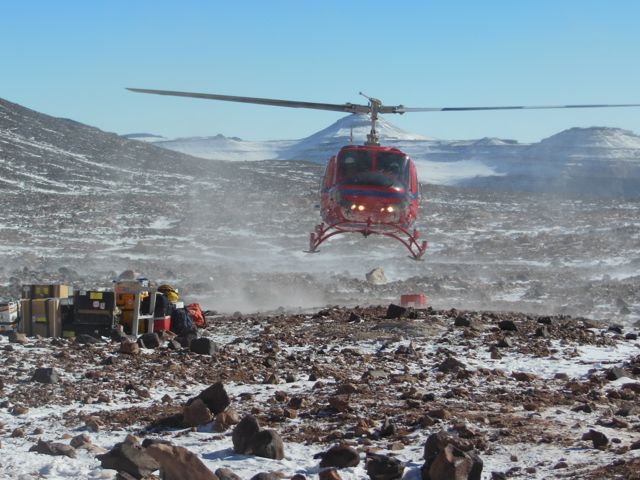
A week ago on 31 January, our team broke camp and pulled back to McMurdo. Here’s one of the pullout helicopters (Bell 212), landing next to a line of outbound cargo.
And I personally never tire of waking up in the middle of this awe-inspiring, icy, huge wilderness.

